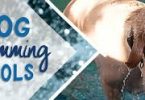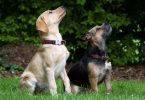When training and living with your dog it is helpful to be able to read both their body language and facial expressions. These are how our dogs communicate with us and this is how they communicate with other dogs. These expressions will help you to understand what your dog is thinking, which will make it easier to train and live with him. Learn to “Read your dog”!
A Guide to Facial Features

Dog Ears-Unlike people, dogs have ears that can swivel, lay back or tilt forward. They also can move independently of each other. This range of movement makes their ears very expressive. When a dog’s ears are held forward, he is alert, when their laid back and relaxed, your dog is relaxed. Forward facing, tensely erect ears show aggression. Ears folded back tightly show a dog who is fearful and may become aggressive.
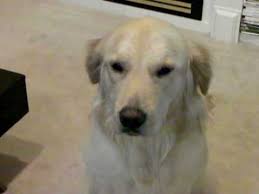
Dog Eyes-A soft and loving look shows affection and trust, and an absence of fear and tension. A direct, eager look indicates trust and alertness. A sideways glance means submission or uncertainty. Rapidly blinking eyes are a reaction to stress and can be a dogs attempt to calm himself down, known as a calming signal. Direct, or hard eye contact sends a message of dominance or aggression.

When the whites of your dogs eyes show, you need to look at other body language clues to figure out the cause. When a dog is afraid and his ears are pulled way back, the stretching of the skin may cause the whites to show. However, if he is lying on his back, it may just be because gravity is pulling his eyelids back.
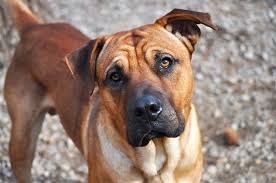
Forehead-When the skin on a dogs forehead is relaxed, so is he. When it’s smooth and drawn back tightly, that means his ears have been pulled down and back because he may be fearful or aggressive. A dog who’s feeling anxious will furrow his forehead over his eyes, just like a knitted human brow.
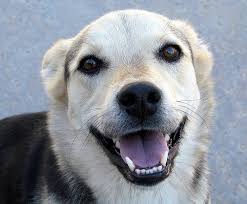
Mouth-A mouth partly open is a relaxed, normal position for many dogs. It doesn’t always signify an emotion, but when it does, the emotion is usually happiness. A panting dog may be nervous or stressed, or he could just be hot.
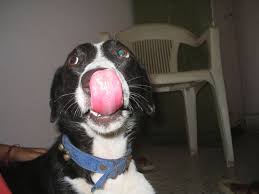
If he’s licking…another dog, a person or his own muzzle that’s a sign of greeting or submission. Licking can also be a calming signal, to calm either himself, another dog or a person.
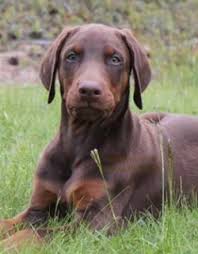
Lips-Relaxed lips indicate a relaxed dog.

An aggressive dog will pull his lips back tightly in a snarl.
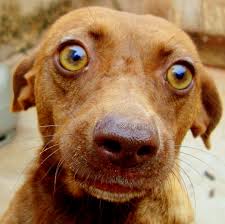
A stressed dog will pull his lips way back, creasing the corners of his mouth. In many dogs, the black lips contrast with the color of the muzzle, emphasizing their expressions and the size and whiteness of their teeth.
It’s easy to read your dog’s face once you understand the subtleties of his expressions. You can then sync this information with other body language to gain a deeper understanding of what your dog is thinking.
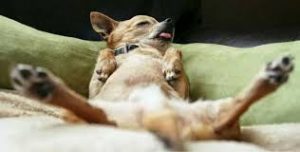
Relaxed, happy and comfortable
Everyone likes to see this expression, in fact dog’s usually look contented and at peace with the world. A dog who’s feeling comfortable and unworried, will look serene and untroubled. His brow will be smooth and his mouth may be either open or closed in a relaxed position, perhaps with his tongue hanging out.
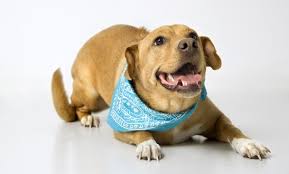
Playful
When a dog is asking someone to play with him, he’ll make it pretty obvious that he has fun in mind. A dog who wants to play will have his eyes wide open, his ears will either be cocked forward or flat, and he may pant or salivate. He’ll look just like a puppy!
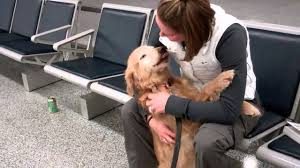
Excited and Welcoming
A dog who is happily greeting his owner, or a puppy who’s saying hello to a friendly older dog, will open his mouth slightly and rapidly flick his tongue in and out. he may try to lick the person or dog, which is a clear sign of respect and affection, or he may lick at the corners of his own mouth.

Submissive and Worried
A dog who’s slightly submissive and a little worried may look indirectly at whatever’s worrying him, but he’s more likely to look away. That’s his way of saying, “Please ignore me, I’m no threat.” His mouth will usually be closed, but sometimes it will be open and his tongue will appear. It may flick out between his front teeth, which is a sign of nervousness or anxiety. He may also try to lick. This gesture is designed to appease the other person or dog that he knows his place and respects the others superior status.
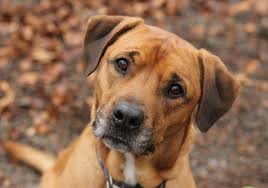
Interested and Curious
When a dog’s interest picks up, so do his facial features. They’ll all move up and forward a little. A curious dog will aim his ears at what he’s looking at, and he’ll be sniffing the air, hoping to figure out what the scent is. He may be nudging something with his nose and his mouth may be closed, unless it’s a hot day, in which his mouth will be open all the time. The skin on his forehead may have a slight wrinkle, but most of the time it will be smooth.
When a dog starts stalking whatever has caught his attention, his facial features will remain up, forward and intent. He may squint a little, his mouth will be closed, and his ears will be pricked up.
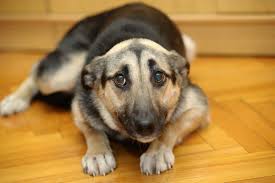
Frightened
Dogs who are frightened don’t just pull back with their bodies-they do so with their faces. They’ll pull their ears back tightly against their heads and pull their lips down and back. They will also lower their heads and look away from whatever is bothering them.
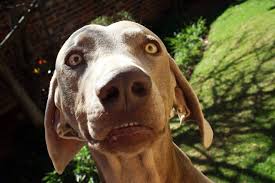
Worried or Anxious
Dogs who are worried or stressed will have dilated pupils, open mouths, and they will pull their lips right back, creasing them at the corners. They may also pant, which is a sign that they are stressed.
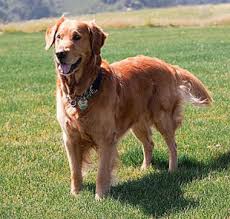
Watchful and Alert
Dogs who are watchful and alert will do the opposite of a frightened dog, their facial features will move up and forward in their eagerness to study what it is that is interesting them. Their eyes will be intense and watchful, and their brow may be furrowed in concentration. The skin around their eyes may be creased, and their mouths slightly agape. The nose will be twitching and their neck muscles will be taut.
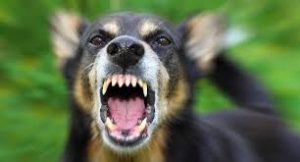
Aggressive
Aggressive facial expressions start out looking much the same as an alert dog. However, when a dog starts feeling aggression, his features will become more distorted. He’ll begin by lifting his lips at the side of his mouth, to show his sharp canine teeth. If he feels the situation needs a sterner warning, he’ll pull his lips up and bare all his teeth. His forward will be furrowed, and the skin around his eyes will be deeply creased. His mouth will be open, and he’ll probably be growling or barking. He’ll also wrinkle the skin over his muzzle-sometimes so much that his nose changes shape.
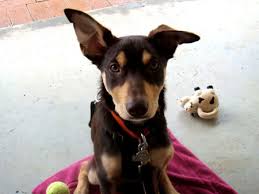
Conflicting Emotion
Dogs are sometimes of mixed minds about things. When a dog’s feeling both protective and a little afraid, as a timid dog might when a stranger approaches his turf, his facial features will show conflicting feelings. His ears may be halfway up, showing a degree of boldness, yet held back against his skull, indicating fear. Sometimes his ears end up in a position between the two extremes, which shows confusion. While drawing his lips up and baring his teeth, a sign of aggression, he may also signal fear by pulling his lips back so that their corners crease. As he bares his teeth, his mouth may be open, not in a tense aggressive position, but open almost fully. This is what a distressed puppy would do, and adult dogs commonly revert to puppy like actions when their aggravated.
References: Rodale-Dogspeak


